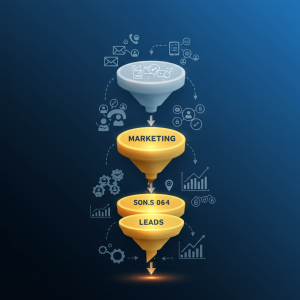Breaking Down Data Silos: The Complete Guide to Marketing Tech Stack Integration

In today’s digital marketing landscape, the average enterprise uses between 50 to 100 different marketing tools. While each solution excels at its specific function, the disconnected nature of these platforms creates significant challenges. Data silos emerge when information remains trapped within individual systems, preventing marketers from developing a unified view of customer journeys and campaign performance.
The Hidden Cost of Fragmented Marketing Systems
Marketing teams feel the pain of disconnected tech stacks daily. Marketing analysts spend countless hours manually exporting, combining, and analyzing data from multiple platforms. Campaign managers struggle to understand the complete customer journey across touchpoints. Decision-makers lack reliable, comprehensive insights to guide strategy. Meanwhile, customers experience disjointed interactions that fail to acknowledge their previous engagements with your brand.
The consequences extend beyond operational frustration. Organizations with fragmented marketing technologies typically see 15-25% lower conversion rates compared to those with integrated systems. According to McKinsey’s marketing analytics research, companies with integrated marketing stacks achieve up to 30% higher marketing ROI than competitors.
Core Components of an Integrated Marketing Tech Stack
A well-integrated marketing technology ecosystem connects these fundamental components:
Customer Data Platform (CDP): The central nervous system that collects, unifies, and activates customer data across channels. CDPs create comprehensive customer profiles by reconciling identities across devices and platforms.
Marketing Automation: These systems execute campaigns across email, social, SMS, and other channels based on triggers, segments, and customer behaviors identified within your unified data.
Content Management System (CMS): Your website represents the destination for much of your marketing activity. Modern CMS platforms should exchange data bidirectionally with your marketing systems.
Analytics and Attribution: These tools measure performance across channels and touchpoints, helping you understand which combinations of marketing activities drive conversions.
Customer Relationship Management (CRM): The system that tracks and manages customer interactions, particularly for sales teams, must share data seamlessly with marketing platforms.
At BrandsDad, we’ve helped numerous clients transform their disconnected marketing tools into cohesive, powerful systems that unlock new capabilities and insights.
Integration Strategies That Actually Work
Successfully integrating your marketing technology requires thoughtful planning beyond merely connecting APIs. Consider these proven approaches:
Start with data strategy, not tools. Define what customer data you need, how it should flow between systems, and what unified reporting will look like before choosing integration methods.
Implement customer identity resolution. Develop a consistent approach to identifying the same customer across platforms, whether through email addresses, device IDs, cookies, or other identifiers.
Choose integration patterns wisely. Different scenarios call for different approaches:
- Real-time API connections for time-sensitive data like website behaviors
- Batch transfers for large data sets like customer segments
- Middleware platforms that specialize in marketing tech integrations
- iPaaS (Integration Platform as a Service) solutions for enterprise-scale needs
Prioritize bidirectional sync. Ensure data flows in both directions between systems rather than one-way pushes that create new forms of fragmentation.
Overcoming Common Integration Challenges
Even with careful planning, marketing technology integration presents several challenges:
Data quality issues often emerge when combining information from multiple sources. Implement data validation and normalization processes to ensure consistent formats, remove duplicates, and resolve conflicting information.
Governance and compliance become more complex with integrated systems. Develop clear policies for data access, establish responsibility for data quality, and implement processes that maintain compliance with privacy regulations across your connected ecosystem.
Team adoption frequently determines success. Provide comprehensive training that demonstrates how integration improves daily workflows, and establish centers of excellence to support implementation and ongoing optimization.
Measuring Integration Success
The true value of marketing tech stack integration appears in concrete business outcomes:
- Reduction in manual data processing time
- Increased accuracy in cross-channel attribution
- Improvement in customer engagement metrics
- Enhanced ability to execute personalized marketing at scale
- More agile response to market changes and campaign performance
One manufacturing client achieved a 40% reduction in customer acquisition costs after integrating their previously siloed marketing technologies. The improved data flow enabled them to recognize high-value prospects earlier in the funnel and allocate resources accordingly.
The Future of Marketing Tech Integration
As marketing technology continues evolving, integration approaches must adapt. Artificial intelligence will increasingly automate data connections and surface insights across platforms. Customer data platforms will expand beyond marketing to connect service, product, and sales technologies. Privacy-first approaches will establish new frameworks for responsible data integration that respect consumer preferences while still enabling marketing effectiveness.
Organizations that master marketing technology integration gain significant competitive advantages through deeper customer understanding, more efficient operations, and the ability to deliver truly cohesive experiences across all touchpoints in the customer journey.








